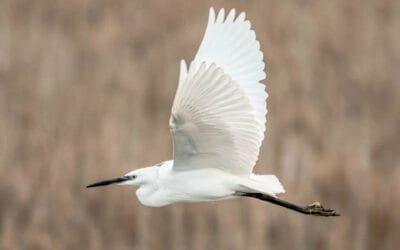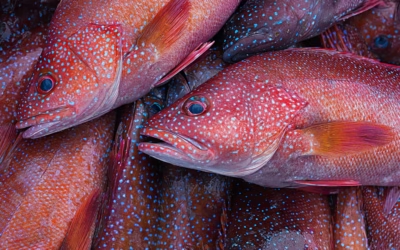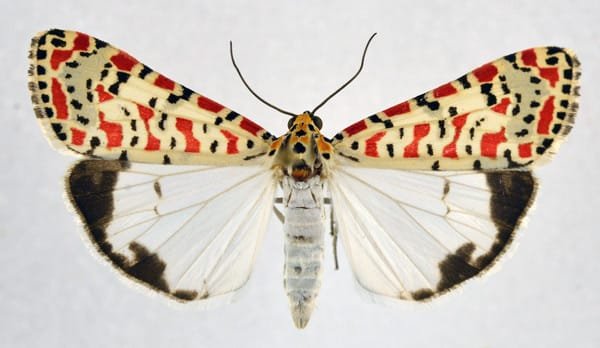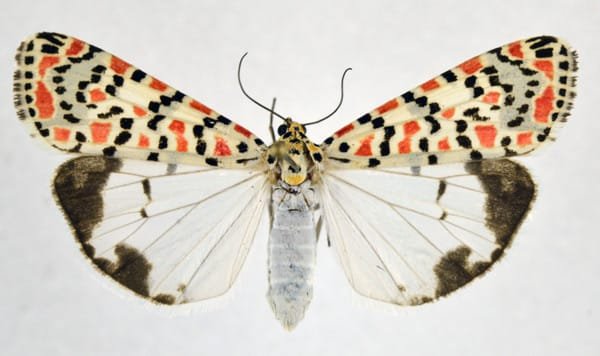Have You Seen This Beautiful Crimson-Speckled Flunkey?
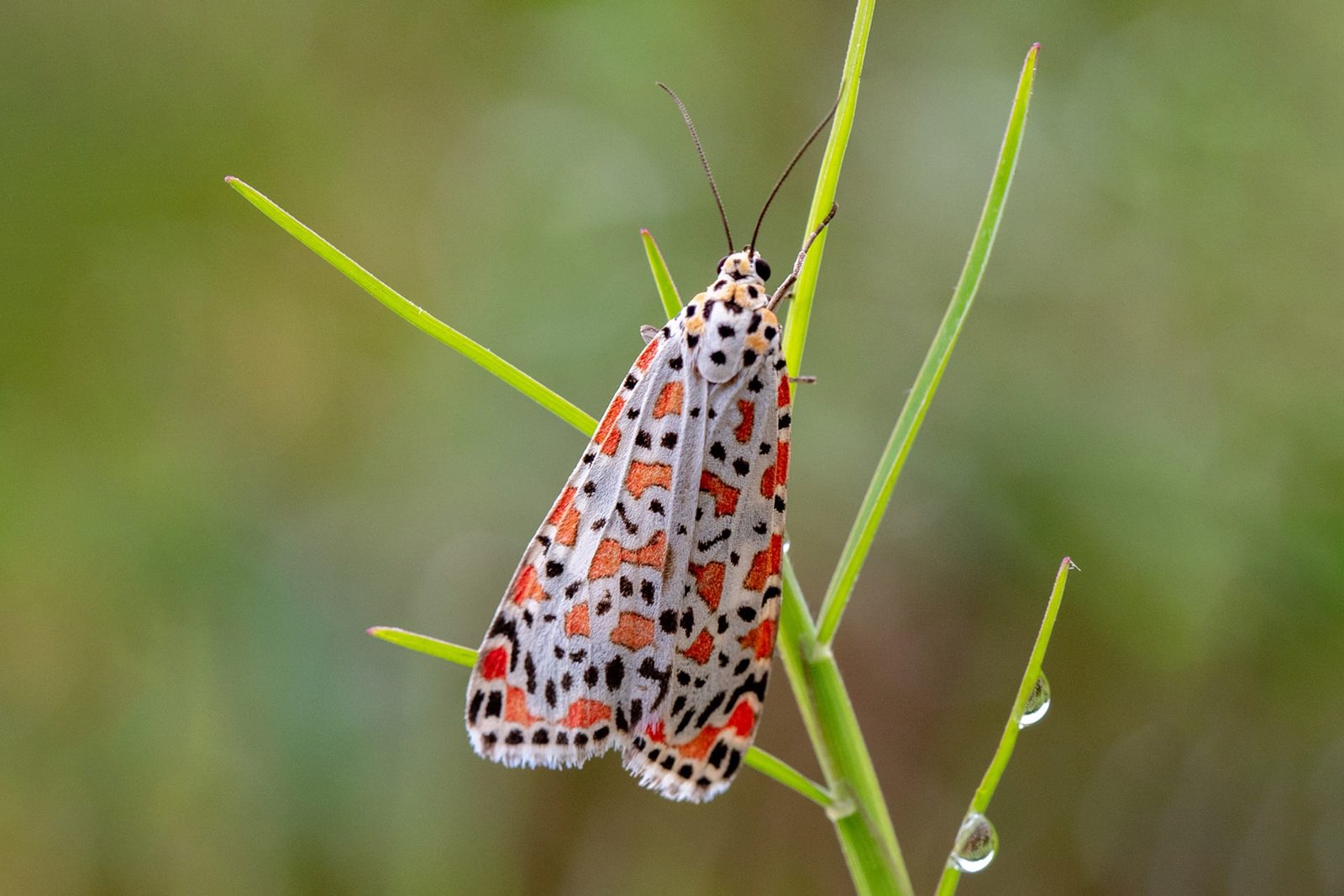
The crimson-speckled flunkey (Utetheisa pulchella), first described by Carl Linnaeus in his 1758 10th edition of Systema Naturae, is a widespread moth that occurs naturally in northern and central parts of Africa, the Mediterranean, Near East and Central Asia. However, it can travel far north with plumes of warm air during the summer or autumn and is observed sporadically even in England (less than 100-200 records in the last century).
Easy to Spot in Cape Verde
The beautiful, crimson-speckled moth is common in Cabo Verde, and it’s easy to recognise among other moth species. It can reach 3-4 cm. Its front wings are narrow, white or cream coloured with a characteristic, variable pattern of numerous small black spots between the larger-sized bright red spots. Sometimes the red dots are merged into transversal bands. The hindwings are white with an irregular black border along the outer edge and two black markings in the middle. The head and thorax have the same pattern as the wings and range in colour from cream to buff yellow. The antennae are long, and the abdomen is smooth, with a white background.
Check out the pictures of a male and female crimson-speckled flunkey below.
From a Larva To an Adult Moth
The polyphagous larvae feed on Trichodesma zeylanicum, Lithospermum, Heliotropium, Trichodesma and Gossypium in Africa, and on a range of herbaceous plants, mainly on forget-me-not (Myosotis), Echium, Borago officinalis, Solanum, Plantago lanceolata and Anchusa species in other regions of the world.
Crimson-speckled moth overwinters in southern Europe as a caterpillar. Caterpillars are warty, dark brown or greyish, with tufts of greyish hairs, an orange crossline on each segment, a whitish line along the back and two other lateral white lines.
Pupation occurs near the host plants, usually on fallen leaves, dead vegetation or pieces of bark and old wood. It hibernates as pupae during mild winters in temperate and typically Mediterranean climates.
Adults of the crimson-speckled moth are usually present from March to early November, with three generations per year. However, in the tropics, they develop continuously. They fly both day and night and come to light.
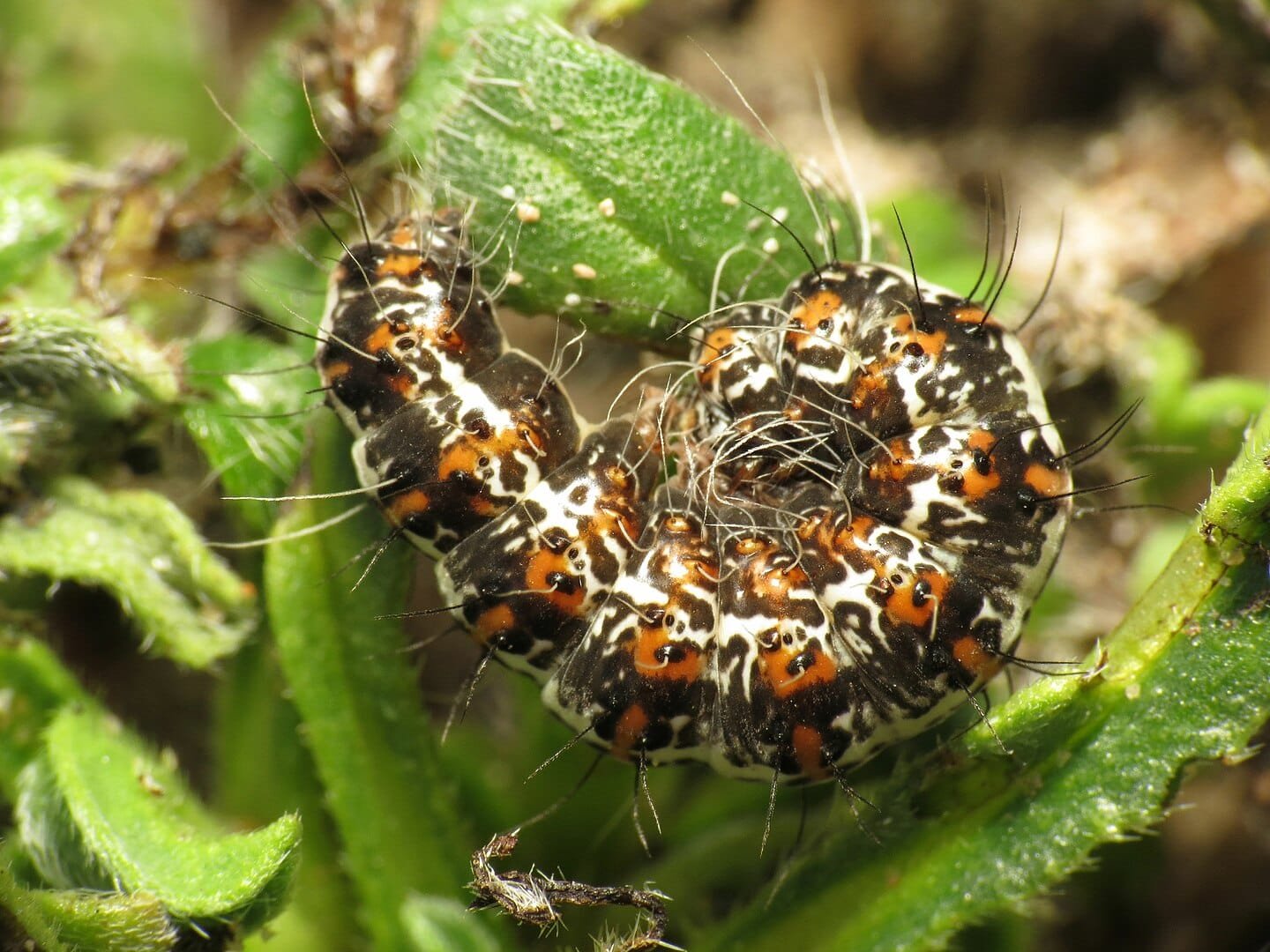
Bibliography / Sources
- Utetheisa pulchella (Linnaeus, 1758) on AfroMoths, an online database of Afrotropical moth species;
- Utetheisa pulchella on Wikipedia, The Free Encyclopedia;
- Crimson Speckled – Utetheisa pulchella on Butterfly Conservation website;
- Pictures of a male and female moth © NHMO, © De Prins J. & W.
- Picture of the caterpillar: Katja Schulz from Washington, D. C., USA, CC BY 2.0, via Wikimedia Commons.
